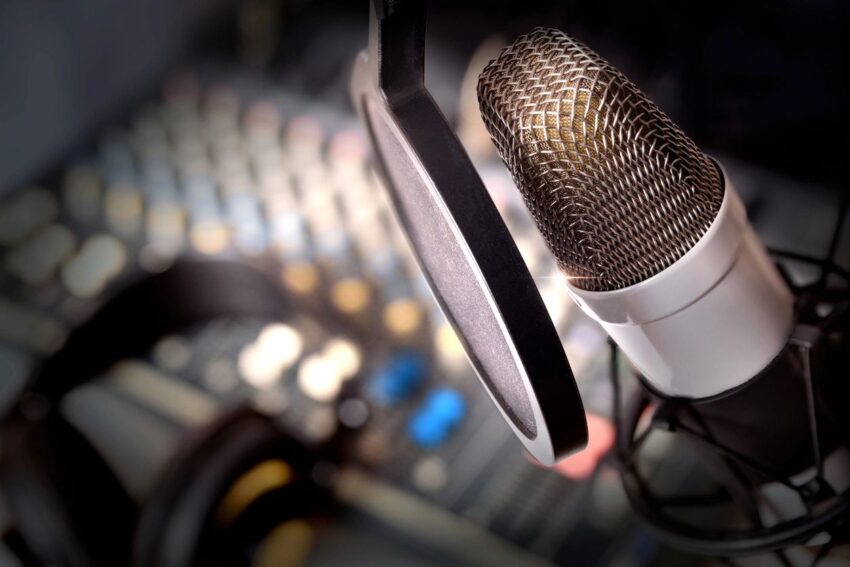Soundproofing and sound absorption are two important elements that indicate the acoustic quality of a music recording studio. You may have picked up on the differences in sound quality in poorly-setup studios. For example, there is usually a heightened echo when used for background music. Undoubtedly, it takes something away from the recording, even if it is well-arranged. It costs about $500 – $20,000 for a setup, and here are a few ways to ensure you’re getting your money’s worth.

-
Assess the shape of the room
After years of specialization, recording studio owners say an irregular-shaped room is an ideal choice. Recording studios avoid perfect shapes like squares and rectangles because they fail to properly diffuse sound waves. On the other hand, an irregular-shaped room helps in diffusion, which ultimately helps to produce a more lively sound. Another thing to be mindful of is a narrow room lined with parallel walls. Although there are ways around making the best out of a not-too-ideal room, it is better to avoid the inconveniences.
With the help of large curtains or drapes, you can reduce sound reflections in the space. Again, if the room has a wide window, those thick curtains can do an excellent job at reducing sound reflections. A studio conversion may require more re-arrangements to improve the acoustics if this is a home studio in an already built house. However, if you’re building a music studio from scratch, you have more flexibility to put the needed structures in place.
-
Ignore the egg box set up
Before music recording studios evolved to the current use of technology to enhance acoustics, something else was used. Egg boxes were set up to absorb sound reflections in music recording studios. People stuck them onto the interior walls of the recording studio to help create a fuller sound devoid of distractions. Today, there are better ways to do that.
Over the years, it has been proven that egg boxes are actually poor absorbers. They may absorb very little unwanted sounds, but a greater portion of noise can seep into the final recording. Certainly, that is not something you want in your music recording. Moreover, in the aesthetics department, egg boxes will score a zero-rating. And this is all the more reason to avoid them when setting up your music recording studio.
-
Use absorption panels
Now, this is a better alternative to egg boxes. You don’t have to stress over mid and high-frequency reflections because absorption panels will do the job. They are made from soft porous material and act as the collection point for sound reflections. These panels help create sound clarity while improving natural sound volume in the recording space.
When you decide to use these absorption panels, you will want to hang them on the walls. The trick to using them is to target the parts of the wall where sound waves hit first. Experts say attaching absorption panels three to six inches from the floor is ideal. This way, whether the recording artist is seated or standing, the panels can capture or absorb the sounds without any hitch.
-
Invest in a perforated acoustic plasterboard ceiling
Without absorption panels, the perforated acoustic plasterboard can be your best bet. By minimizing reverberations and other unwanted noises, your studio recording can be crisp and crystal clear. The advantage of using perforated acoustic plasterboard is its ability to drastically reduce unwanted sounds.
The question now is why these plasterboards are perforated. According to studio engineers, these spaces serve several purposes. However, one vital function is to improve the absorption rate and enhance the final sound quality. Acoustic plasterboards can be installed on the ceiling of the recording studio. Fortunately, they come in several patterns to fit the style theme you want to create.
-
Use the right microphone
Indeed, the quality of your music recording often depends on the quality of the microphone used. Did you also know that the size of the primary recording studio influences how the microphone sounds? For instance, a small recording studio will cause a regular microphone to give off lower frequencies. In more technical terms, this is known as the sound character. You never really know the peculiar sound of the room until you listen to recording playbacks.
Some rooms have bass undertones, while others may sound slightly high with treble undercurrents. If you use a regular microphone, these lower frequencies may alter the sound of the final recording. This is why Rode condenser mics are used in many music recording studios. They are excellent for cutting out unwanted undertones for the best natural sound. More importantly, you will likely have fewer retakes with the right microphone. Therefore, before purchasing one, ensure you have all the details and features of the device. For example, it is a good idea to read the rode nt1a reviews to learn about this essential studio tool.
-
Conduct sound checks in the room
When everything is in place, the next thing to do is check the room. It is recommended to conduct sound checks at different times of the day. According to sound engineers, this will help evaluate the quality of sounds at different times of the day. Indeed, in a well-set-up music recording studio, the time of day would not be much of a problem. However, it is due process, and you cannot afford to ignore these checks.
Furthermore, with the help of certain apps, you can test the acoustic properties of the recording room. Apps like Test HiFi, Speaker Tester, and STIPA make this possible. Fortunately, these apps can be accessed on Android and iOS devices. Remember that these checks are necessary to limit the extra time it takes to edit recorded sounds. Now that is effective time management.
Setting up a music recording studio is technical, and you may need experts to help. Thankfully, there is a wealth of accessible information and instructions you can follow to be successful at setting up your studio. Hopefully, this piece provided relevant details.

